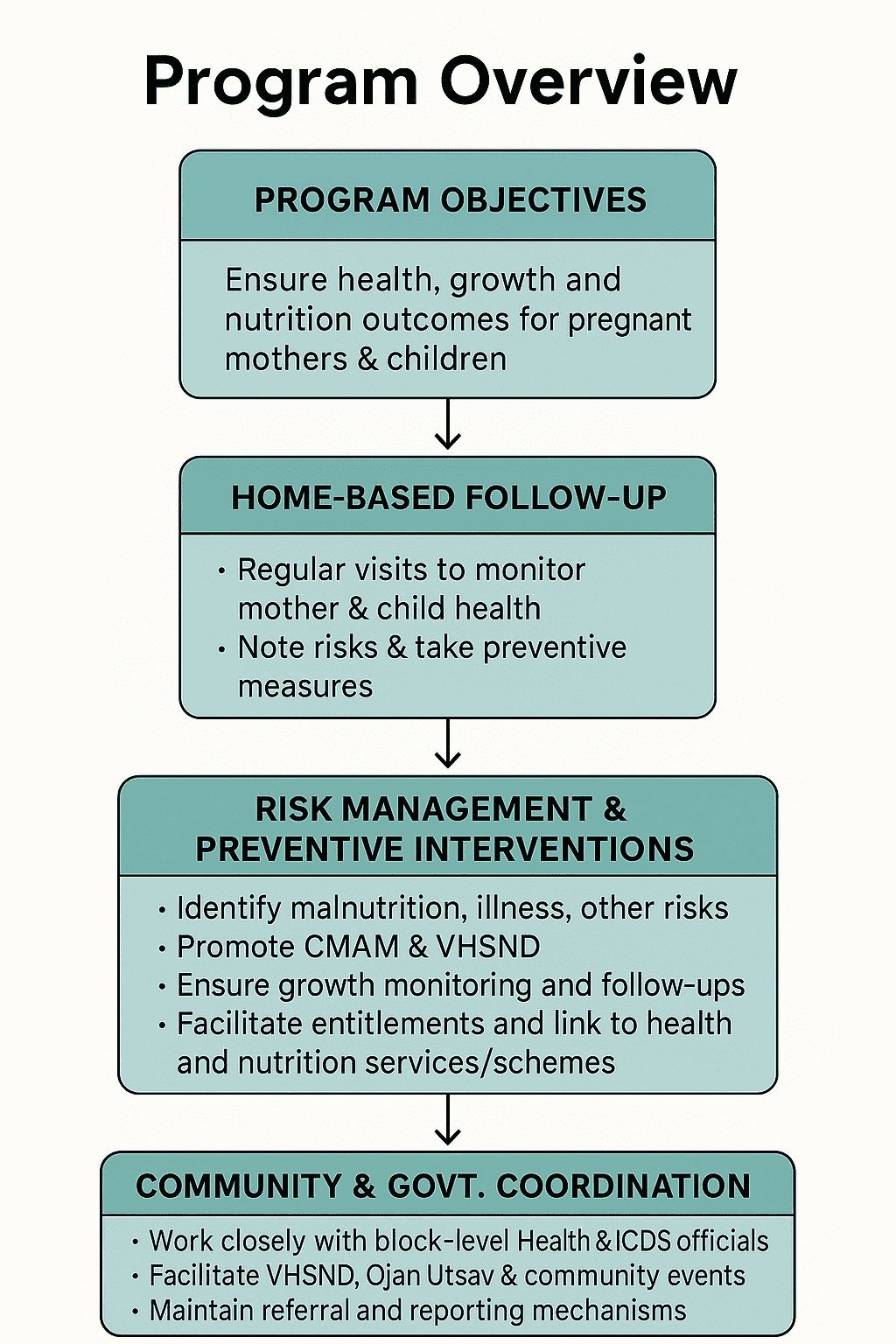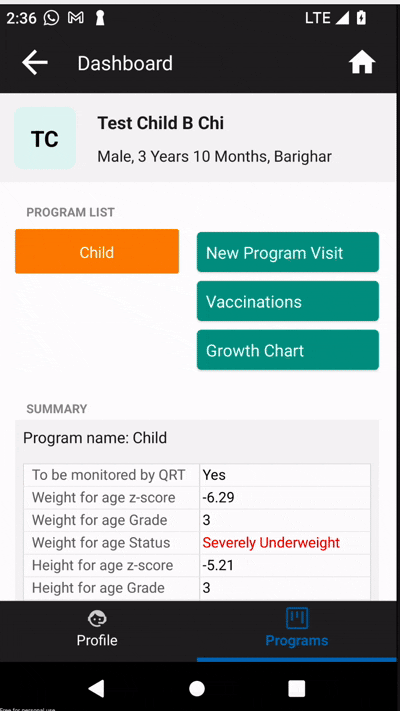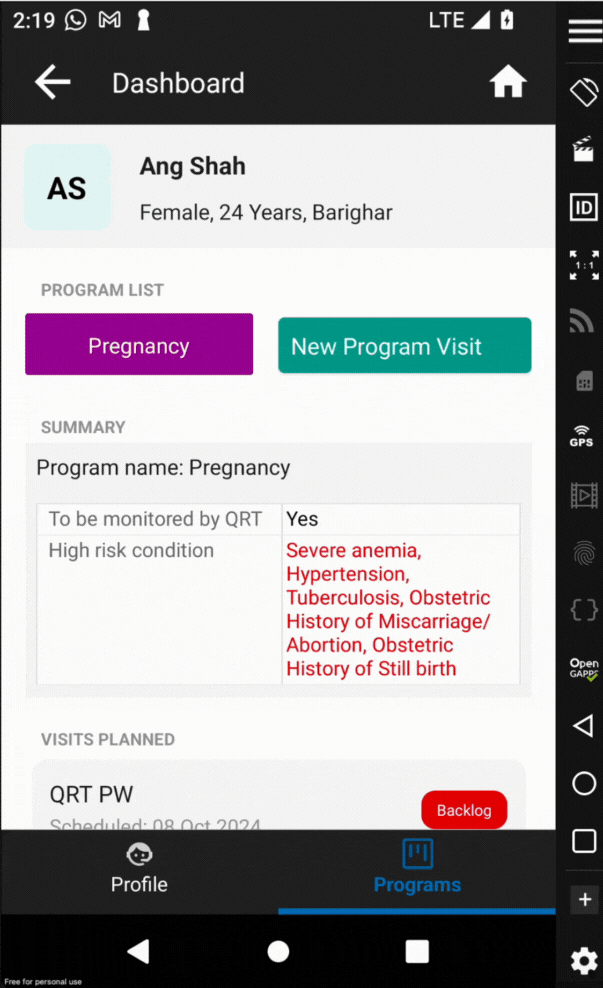Bridging the Nutrition Gap - APF Odisha’s Data-Driven Maternal and Child Health Program Using Avni
Last updated on: May 28, 2025 by Avni Team

Child nutrition is a vital indicator of a nation’s health and development. While India has made significant strides in improving maternal and child health over the last decade, there is still a pressing need to address persistent gaps, especially in underserved rural communities.
One of the most impactful periods in a child’s life is the first 1,000 days. Nutrition during this window plays a pivotal role in shaping the child’s cognitive development, immunity, and long-term health outcomes.
🎥 Video Case Study: Azim Premji Foundation | Community Nutrition Program (CNP)
Watch on YouTubeAPF Odisha Nutrition Initiative: Focused Care from Pregnancy to Early Childhood
The Azim Premji Foundation’s Odisha Nutrition Initiative addresses these challenges with a focused intervention that spans from pregnancy through the first five years of a child's life. The initiative targets maternal and child nutrition through community-level engagement, regular monitoring, and technology-driven support systems.

Why Technology Was Essential
Frontline health workers in rural and tribal areas often operate under challenging conditions, including:
- Inconsistent or no internet connectivity
- Limited access to timely health data
- Manual, paper-based reporting systems
The solution required a digital platform that could:
- Be usable offline in remote areas with poor connectivity.
- Customizable for local health workflows.
- Supporting real-time data collection and reporting.
- Be easy to use for health workers with a very basic level of training.
The Solution: Avni – Open-Source Technology for Social Impact
Avni is a powerful, open-source platform for field service delivery. It is designed to enable digital data collection, decision support, and real-time reporting for community health programs. With offline functionality and modular workflows,it is ideal for nonprofits, government partners, and social enterprises aiming for deep impact.
Built and maintained by the Samanvay Foundation, Avni is currently being actively used by multiple NGO across India.
How APF Odisha Is Using Avni
The Azim Premji Foundation integrated Avni into its Pregnancy and Child Program in Odisha, particularly in underserved rural communities. The deployment focuses on improving early identification of at-risk cases, enhancing field supervision, and enabling data-driven program management.
1. Pregnancy Program: Proactive Maternal Care
- Registration & Lifecycle Tracking: Every pregnant woman is registered in the Avni app and monitored through antenatal, delivery, and postnatal stages.
- Risk Identification: The app flags high-risk pregnancies, triggering rapid follow-up by Poshan Sathi and Quick Response Team (QRT) personnel.
- Timely Reminders: Health workers and supervisors receive automated alerts for critical visits (ANC and PNC), ensuring no woman misses essential care.
2. Child Program: Nutrition Surveillance and Support
- Growth Monitoring: Children under five are tracked monthly for weight, height, and developmental milestones, using WHO growth charts.
- Malnutrition Detection: Children identified with Severe Acute Malnutrition (SAM) or Moderate Acute Malnutrition (MAM) are prioritized for intervention.
- NRC Referrals & Follow-up: Severely affected children are referred to Nutrition Rehabilitation Centres (NRCs) directly through the app. Their recovery and follow-up are digitally tracked post-discharge.
3. TIMS: Training and Information Management System
The Training and Information Management System (TIMS) is a custom-built module within Avni for APF Odisha. It allows:
- Field staff to request training support based on real-time challenges
- Program leads to track training needs and conduct targeted upskilling
4. Supervisor Monitoring
Supervisors log visits to Anganwadi Centres and Village Health Nutrition Days (VSHNDs) within Avni. This ensures real-time visibility for program managers into field operations and quality checks.
5. Comprehensive Reporting
Avni offers dashboards and downloadable reports to help APF and its partners evaluate program impact, identify issues, and make data-driven decisions. Reports are built on an innovative BI tool - Superset




Program Reach and Impact
Through the Avni platform, the Odisha Nutrition Initiative has achieved significant scale:
- 300 frontline workers actively using the app
- 79,000 children tracked
- 22,000 pregnant women enrolled
- 7,357 households counselled on dietary diversity and Infant and Young Child Feeding (IYCF) practices
- 1,275 children with low Weight-for-Height (WFH) referred to CMAM
- 3,793 high-risk pregnancies linked to institutional deliveries and timely ANC
The APF-Avni collaboration in Odisha shows how simple, scalable tech can strengthen public health systems by empowering field workers, improving data quality, and ensuring that no high-risk case is missed. This approach sets a benchmark for sustainable, tech-driven healthcare delivery in rural India.
“Avni plays a pivotal role in strengthening the Community Nutrition Program by bridging the gap between field-level data collection and real-time decision-making. Its offline-first design is especially effective in remote tribal areas with limited connectivity. By enabling frontline workers to capture key data on maternal and child health and service delivery during home visits, growth monitoring sessions, and VHSNDs, AVNI facilitates the timely identification and follow-up of High-Risk Pregnancies (HRP) and undernourished children.” \- **Ramesh Sahu, Program Manager**
If you're interested in adopting a similar approach or want to learn more about how the Avni platform can support your initiatives:
Let’s work together to scale impactful solutions for better health outcomes.